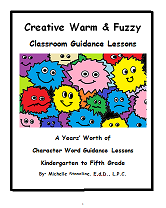Learn an Extreme Behavior Intervention Technique
"The Boring Room"
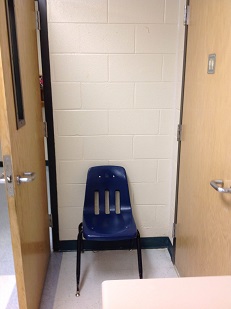
A Behavior Intervention for Extreme Behavior Issues: Help for teachers, school counselors, and administrators who deal with behavior issues in the school setting.
The Boring Room: This behavior intervention works best for extreme behavior situations. It can be used on several different levels.
For instance, once I had a six year old student that was hitting and hurting other students. He had a behavior action plan and we were calling the parent to come in each time the student hit another student, or showed a violent act of aggression.
This child was placed on the Response to Intervention, but was showing Oppositional Defiant behaviors. In our state this is not a special educational referral unfortunately.
This student would act out several times a day and we would call the parent to request that they come in and speak to the child after an episode. After a few days the parent began to refuse to come in to talk to the student.
We started in the classroom. The teacher created a space with low bookshelves turned backwards for the student to work in. It was about the size of a play pen.
The child could see out of the space, but had an actual barrier between him and the other students. The student was getting the same education that the other students were getting, but with a more restrictive barrier.
Several times per day he would throw chairs, desks, scissors, and other items. When he threw an item out, it was not returned in order to protect the other students.
He would also yell, scream, make noises, etc. The restrictive barrier helped with the aggressive behavior, but it did not stop the yelling and screaming. This is when he was taken to the "Boring Room" for a time out.
In order to stop the yelling and screaming we created a time out space in another room. We ended up calling this the “Boring Room”, but you could also call it a “Cool Down Room”.
Basically, this was just a door and a corner of a room with a chair in it. I would call it a “makeshift” room. We took all the posters and distracters off the wall. The point is that this room has to be cleared of furniture, distractions, wall items, etc.
It has to be away from the other students. This room is called “The Boring Room” for a reason. You cannot have a “Boring Room” in your classroom because the other students are distracters that can entertain the student with behavior issues.
Try to think of the “Herd Mentality” in the animal kingdom. Animals need to be around other animals. With the “Boring Room” you are taking the child out of the herd (the classroom). The child must learn to respect the "herd" before being allowed back into the classroom.
So, here is what you do if you want to try the “Boring Room” on a student that is acting out to the extremes:
- Find a quite room and create a space for a chair. I use a corner attached to a door and keep the door open. It creates a space with three walls. Strip everything off the walls. This room has to be boring, but also safe from items that can be thrown. Make sure it is well lit with a safe sturdy chair.
- Take the student to the room and ask them to sit in the chair. Do not say anything else.
- Make sure you take your phone with you. I use mine as a timer and I also check e-mails as I am sitting with the child. I try to make myself look as disinterested as possible in the student. I do not act angry or mad. It is important to remain neutral and act as if you don't mind staying in this room all day long.
- Set the timer for the amount of time the child is in age. For example, if a child is six that is six minutes.
- If the child acts out in the time out given, then add a minute on for each episode of acting out. Tell the child you are adding a minute on for each episode. Do not go over ten minutes, as the child cannot handle a time out longer than this amount of time.
- At the end of the time out (No more than ten minutes) tell the child that they have sat quietly for “______” minutes and you are proud of them.
- Now, ask the child what they want to do. They will usually shrug their shoulders at you.
- Next, give the child a choice, quietly say the following: “We can continue to sit here, or go back to class. The choice is yours.”
- The child will almost always say, “I want to go back to class.” Once you get this from the child you ask him or her, “Okay, you say you want to go back to class, but what are you going to do for your teacher to be allowed to go back to class.”
- Usually, the child will say, “Be Good”. I tell them I need to know what “Be Good Means”. They usually will give you a rundown of what behaviors they need to stop. This makes the child accountable for their behavior and breaks it down into smaller parts.
- I then remind the child to look around the “Boring Room” and tell them that this could be their new classroom if they do not change their behavior.
- We go back to class and the student usually behaves for a while. When they misbehave again we go back to the “Boring Room” and do the entire process over again. It usually takes about seven to ten times for students to realize that if they misbehave in class, they will go to a very boring place.
This technique should only take a week to see a difference in the child's behavior. After that, you may only have to visit the "Boring Room" every now and then as a reminder to the child to behave.
Boredom is the ultimate leverage here. You have to make the student want to go back to the classroom. You also have to make the student think it was their idea to go back to the classroom.
The hardest part of this is to make sure you have a second person to remove the child from the classroom who is trained on what to say and when to say it.
This intervention will not work if you are yelling at a child, or talking too much. You have to be quiet until the very end.
Also, this intervention will not work if you put a child in a room with things on the wall, etc. It has to be a very dull and boring room.
And remember; never ever leave a child alone in a room. We have glass windows in our doors at my school. But, if you do not have glass windows in your doors you can keep a door open.
See other Behavior Intervention Supports Here
Creative Counseling 101.com Home
Disclaimer: This website and its content is intended for trained licensed mental health professionals and school certified mental health professionals to use for their clients / students at their own discretion.
*If you ignore the disclaimer above are using these techniques on yourself and you feel any discomfort or upset it is highly suggested that you seek out a licensed mental health professional immediately.
"Beyond Art Therapy" is the concept from Dr. Stangline that combines all creative fields in therapy. It is not the traditional "art therapy" but goes beyond to include sand tray therapy, play therapy, mindfulness, meditation, color therapy, cognitive behavioral therapy, and a vast majority of other therapies.
For any other type of mental health emergency call your local 911 / Police Number immediately.
Dr. Stangline does not offer advice / suggestions to anyone who is not a professional mental health provider, or a student who is studying this field and has questions about mental health programs of study.
See our Exciting Selection of eBooks:
Award Winning:
Creative Counseling 101 eBook
Our Best Seller!
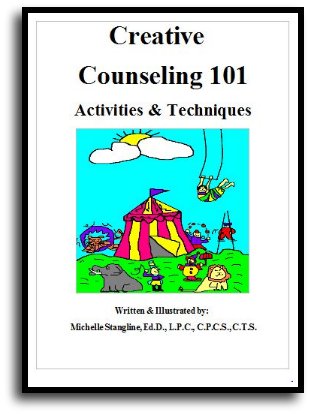
Step By Step Therapy:
Learn how to be a more Creative Therapist with the Book that started it all!
- Graduate School Counseling book used by hundreds of graduate counseling students!
- Includes full color reproducible worksheets with most activities.
- Winner of the Counselor Writer of the Year Award, 2011, Georgia Regional Award
Download Your Copy Today Only $39.95:
See Creative Counseling 101 eBook Information Here:
Get the Set
of all four
eBooks for only $98.95:
An incredible collection of how to do therapy eBooks!
A $159.80 Value,
You Save Over $60!
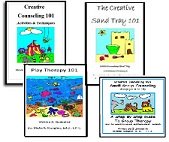
Get your complete set of the Creative Counseling 101.com eBooks by Dr. Michelle Stangline for only $98.95, that's less than $25.00 per eBook (Regular Price is $39.95 for each eBook.).
Your complete set includes:
- Creative Counseling 101
- Creative Group Counseling 101
- Creative Play Therapy 101
- Creative Sand Tray 101
For more information click the link below:
See Complete Set of eBooks For Sale Here:
New!!! "Beyond Art Therapy" 101 eBook
Over 300 pages of Beyond Art Therapy activities and techniques. Learn what I teach graduate counseling students!
See the link below for more information.
Only $39.95

See More Invividual eBooks For Sale:
Sand Tray Therapy 101 eBook:
Learn how to do Sand Tray Therapy or enhance your skills.
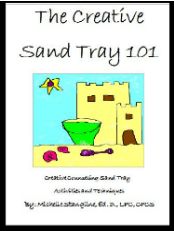
Play Therapy 101 eBook
Learn how to do play therapy or enhance your skills.
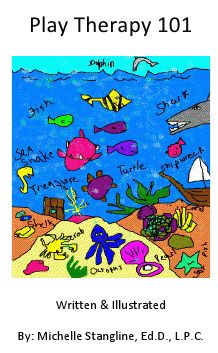
Small Group Counseling eBook For Sale:
Learn how to do creative group therapy and enhance your skills.
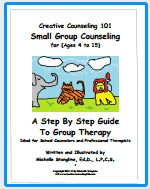
School Counselor Guidance Lesson & Social Stories eBook for sale:
Get a year's worth of school counselor guidance lessons with "Creative Warm & Fuzzy Classroom Guidance Lessons eBook". Introduce your students to the "Warm & Fuzzy Way". Click the link below for more information:
Warm & Fuzzy School Counselor Guidance Lessons eBook
